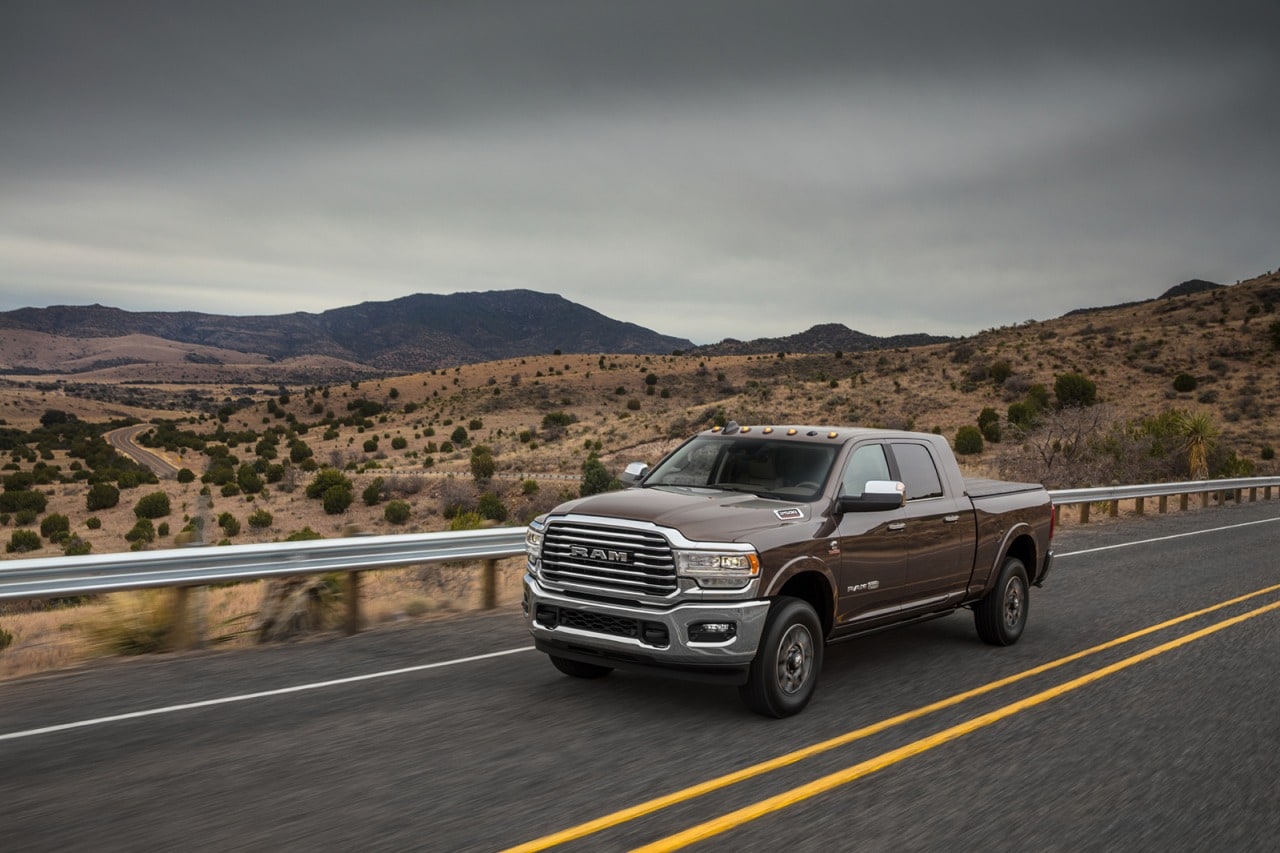A crew-cab truck is the most spacious and passenger-friendly cab configuration offered on any compact, midsize, full-size or heavy-duty pickup. Crew cabs have full rear doors and usually offer ample space for each seat in the back row — even the middle. There are pros and cons to picking a crew cab over other cab styles, like regular and extended cabs, but if you're frequently traveling with more than one passenger, crew cabs are undoubtedly the way to go.
To better understand what a crew cab is, we'll examine the other truck cab types first.
What is a regular cab?
Most trucks employ body-on-frame construction, which means that the body is placed on top of a tough frame that supports powertrain and suspension components. A body-on-frame truck is split between the passenger space, or cab, up front and the storage bed at the rear.
A regular cab truck offers the simplest cab configuration, with a single row and two or three seats. Because the frame is supporting less cab weight, a regular-cab truck generally (but not always) has superior tow ratings compared to an identically equipped extended cab or crew cab. And since there's not an entire second row for a manufacturer to build and trim with seats and materials, the price for a regular cab is lower than for the other cab types. You can also specify the maximum bed length a pickup offers with a regular cab.
But the three-seat maximum does limit the use case for regular-cab pickups. They were more popular when trucks were primarily used for work applications and bare-bones in terms of passenger accoutrements, but modern pickups often do double duty as family vehicles. There are no compact or midsize pickups that offer a regular cab, and if you step up to a full-size or heavy-duty truck, you'll only find regular cabs on the one or two most affordable trim levels — those marketed toward fleet or business buyers.
What is an extended cab?
Extended cabs have an extra row of seating behind the first row, expanding the total number of seats to five or six, depending on how the front row is configured. Extended cabs go by a number of different names depending on the manufacturer. Ford's SuperCab, Ram's Quad Cab, Chevrolet's and GMC's Double Cab, Nissan's King Cab and Toyota's Double Cab are all names for the respective automaker's extended-cab offering. The rear doors are noticeably smaller than the ones in front and are either conventionally front-hinged (Chevy Silverado 1500 and Ram 1500) or rear-hinged (Ford F-150 and Nissan Titan) — which require the front doors to be open first.
Extended cabs are clearly more versatile than regular cabs. The additional row means you can load your family or co-workers inside, and towing and payload capacities are similar to those in an identically equipped regular cab.
However, extended cabs aren't the holy grail for buyers who often travel with multiple passengers. The rear quarters can be cramped — this is especially true of midsize extended-cab trucks — and the short rear doors can make it tricky to gracefully enter the back seat. Because they aren't as popular as crew cabs, manufacturers don't offer extended cabs in as many trim levels (though extended cabs are typically available in more variants than regular cabs). For the ultimate in passenger comfort, you'll want to opt for a full crew cab.

 by
by